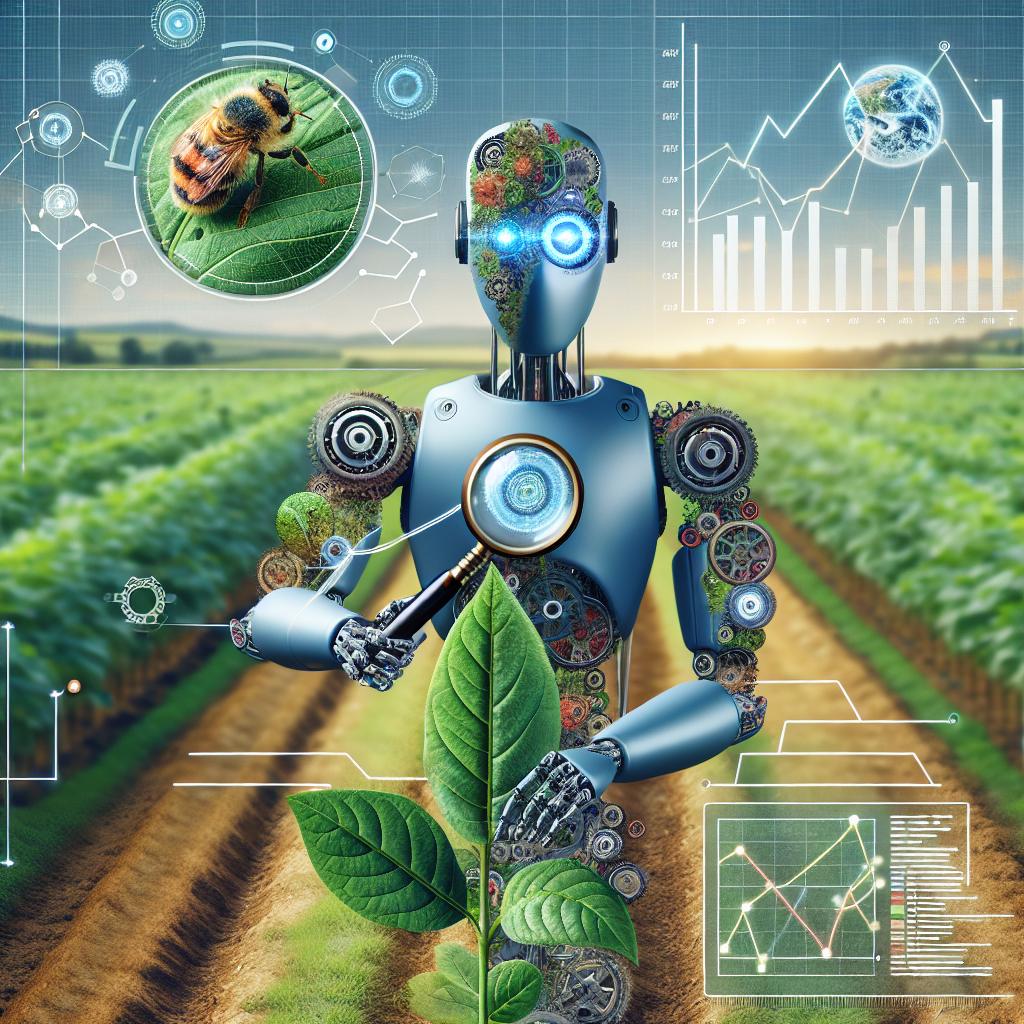AI-Powered Solutions for Pest and Disease Management in Agriculture
In recent years, the agriculture industry has been undergoing a digital transformation, with the adoption of artificial intelligence (AI) technologies playing a key role in improving efficiency and productivity. One area where AI is making a significant impact is in pest and disease management, helping farmers to identify and mitigate threats to their crops more effectively than ever before.
Traditional methods of pest and disease management in agriculture have relied on manual observation and data collection, which can be time-consuming and labor-intensive. With the help of AI-powered solutions, farmers can now leverage cutting-edge technology to monitor their fields in real-time, identify potential threats early on, and take proactive measures to protect their crops.
One of the key advantages of AI-powered solutions for pest and disease management is their ability to analyze vast amounts of data quickly and accurately. By collecting data from sensors, drones, satellites, and other sources, AI algorithms can detect patterns and anomalies that may indicate the presence of pests or diseases in the field. This allows farmers to respond more rapidly and effectively to threats, reducing the risk of crop damage and loss.
Another benefit of AI-powered solutions is their ability to provide personalized recommendations for pest and disease control. By analyzing data on crop health, weather conditions, and other factors, AI algorithms can generate tailored treatment plans that take into account the specific needs of each field. This not only improves the effectiveness of pest and disease management strategies but also minimizes the use of chemicals and other inputs, reducing costs and environmental impact.
AI-powered solutions for pest and disease management in agriculture come in various forms, including:
1. Image recognition technology: By analyzing images of crops captured by drones or cameras, AI algorithms can identify signs of pest infestations or disease symptoms, allowing farmers to take targeted action to address the problem.
2. Predictive modeling: AI algorithms can analyze historical data on pest and disease outbreaks, weather patterns, and other factors to predict the likelihood of future threats. This enables farmers to implement preventive measures before problems arise, reducing the need for reactive interventions.
3. Decision support systems: AI-powered decision support systems provide farmers with real-time information on pest and disease conditions in their fields, along with recommendations for control measures. This allows farmers to make informed decisions quickly, improving the overall efficiency of their operations.
4. Robotic systems: AI-powered robots can be used to automate tasks such as scouting for pests, applying treatments, and monitoring crop health. By using robots equipped with AI technology, farmers can reduce labor costs and improve the accuracy and precision of pest and disease management activities.
While AI-powered solutions offer many benefits for pest and disease management in agriculture, there are also challenges and limitations to consider. These include:
1. Data quality and availability: AI algorithms rely on high-quality data to make accurate predictions and recommendations. Ensuring the reliability and consistency of data collected from various sources can be a challenge for farmers, especially in remote or resource-constrained areas.
2. Integration with existing systems: Integrating AI-powered solutions into existing farm management systems and workflows can be complex and time-consuming. Farmers may need to invest in training and infrastructure upgrades to fully leverage the capabilities of AI technology.
3. Cost: Implementing AI-powered solutions for pest and disease management can be expensive, especially for small-scale farmers with limited resources. While the long-term benefits of AI technology are significant, the upfront costs of adoption may be prohibitive for some farmers.
Despite these challenges, the potential benefits of AI-powered solutions for pest and disease management in agriculture are clear. By harnessing the power of AI technology, farmers can improve crop yields, reduce losses, and minimize environmental impact, ultimately contributing to a more sustainable and resilient food system.
FAQs
Q: How can AI technology help farmers identify pest and disease threats in their fields?
A: AI technology can analyze data from sensors, drones, satellites, and other sources to detect patterns and anomalies that may indicate the presence of pests or diseases. By collecting and analyzing data in real-time, AI algorithms can provide farmers with early warnings of potential threats, allowing them to take proactive measures to protect their crops.
Q: Are AI-powered solutions for pest and disease management cost-effective for small-scale farmers?
A: While the upfront costs of implementing AI technology may be significant, the long-term benefits of improved crop yields, reduced losses, and minimized environmental impact can outweigh the initial investment. Some AI-powered solutions offer flexible pricing models or subsidies for small-scale farmers to help make adoption more affordable.
Q: How can farmers integrate AI-powered solutions into their existing farm management systems?
A: Integrating AI-powered solutions into existing farm management systems may require training, infrastructure upgrades, and changes to workflows. Farmers can work with technology providers and consultants to develop a customized implementation plan that takes into account their specific needs and constraints.
Q: What are the key considerations for farmers when selecting an AI-powered solution for pest and disease management?
A: When selecting an AI-powered solution for pest and disease management, farmers should consider factors such as data quality, integration with existing systems, cost, and scalability. It is important to choose a solution that aligns with their goals and objectives, as well as their budget and resources.
In conclusion, AI-powered solutions offer tremendous potential for improving pest and disease management in agriculture, helping farmers to identify threats early, make informed decisions, and protect their crops more effectively. While there are challenges and limitations to consider, the benefits of AI technology for pest and disease management are clear, making it a valuable tool for enhancing the resilience and sustainability of the agriculture industry.

